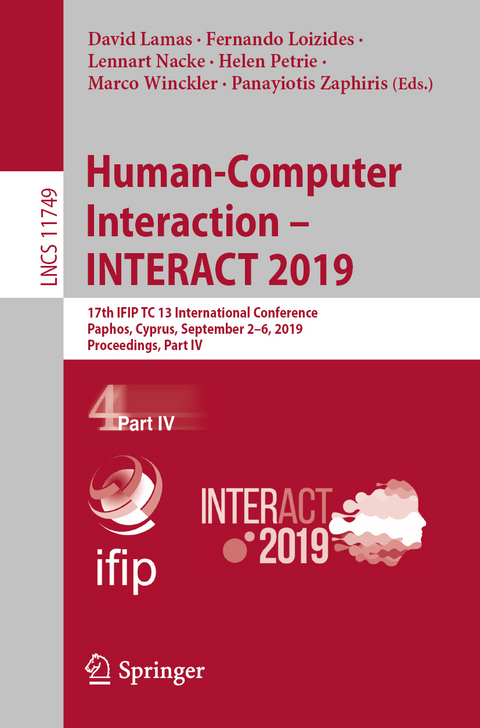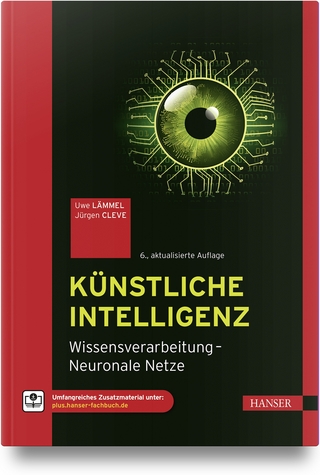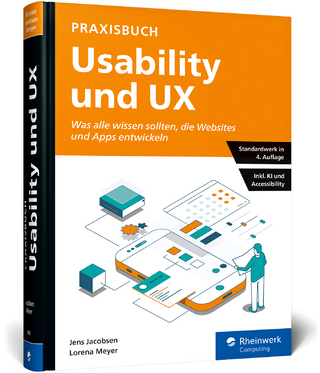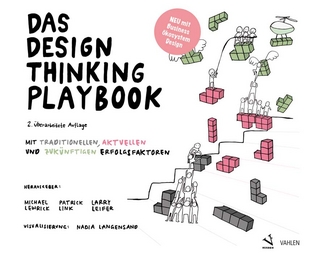
Human-Computer Interaction – INTERACT 2019
Springer International Publishing (Verlag)
978-3-030-29389-5 (ISBN)
The total of 111 full papers presented together with 55 short papers and 48 other papers in these books was carefully reviewed and selected from 385 submissions. The contributions are organized in topical sections named:
Part I: accessibility design principles; assistive technology for cognition and neurodevelopment disorders; assistive technology for mobility and rehabilitation; assistive technology for visually impaired; co-design and design methods; crowdsourcing and collaborative work; cyber security and e-voting systems; design methods; design principles for safety/critical systems.Part II: e-commerce; education and HCI curriculum I; education and HCI curriculum II; eye-gaze interaction; games and gamification; human-robot interaction and 3D interaction; information visualization; information visualization and augmented reality; interaction design for culture and development I.
Part III: interaction design for culture and development II; interaction design for culture and development III; interaction in public spaces; interaction techniques for writing and drawing; methods for user studies; mobile HCI; personalization and recommender systems; pointing, touch, gesture and speech-based interaction techniques; social networks and social media interaction.
Part IV: user modelling and user studies; user experience; users' emotions, feelings and perception; virtual and augmented reality I; virtual and augmented reality II; wearable and tangible interaction; courses; demonstrations and installations; industry case studies; interactive posters; panels; workshops.
The chapter 'Experiencing Materialized Reading: Individuals' Encounters with Books' is open access under a CC BY 4.0 license at link.springer.com.
The chapter 'What Is Beautiful Continues to Be Good: People Images and Algorithmic Inferences on Physical Attractiveness' is open access under a CC BY 4.0 license at link.springer.com.
User Modelling and User Studies.- An Analysis of (Non-)Use Practices and Decisions of Internet of Things.- Analysis of utilization in the message card production by use of fusion character of handwriting and typeface.- Communicating User Insights with Travel Mindsets and Experience Personas in Intra-City Bus Context.- Effects of Age-Related Cognitive Decline on Elderly User Interactions with Voice-Based Dialogue Systems.- GDI as an alternative guiding interaction style for Occasional users.- User Experience.- A Novel Method to Build and Validate an Affective State Prediction Model from Touch-Typing.- Acceptability of Persuasive Prompts to Induce Behavioral Change in People Suffering from Depression.- The UX construct - does the usage context influence the outcome of user experience evaluations?.- User Experience of Driver State Visualizations: a Look at Demographics and Personalities.- Users' Emotions, Feelings and Perception.- As Light As Your Scent: Effects ofSmell and Sound on Body Image Perception.- Experiencing Materialized Reading: Individuals' Encounters with Books.- "I Kept Browsing and Browsing, But Still Couldn't Find the One": Salient Factors and Challenges in Online Typeface Selection.- Integrating a Binaural Beat into the Soundscape for the Alleviation of Feelings.- What is Beautiful Continues to be Good: People Images and Algorithmic Inferences on Physical Attractiveness.- Virtual and Augmented Reality I.- Design and evaluation of three interaction models for manipulating Internet of Things (IoT) devices in Virtual Reality.- Head Mounted Display Interaction Evaluation: Manipulating Virtual Objects in Augmented Reality.- On the Use of Persistent Spatial Points for Deploying Path Navigation in Augmented Reality: An Evaluation Study.- User Experience Guidelines for Designing HMD Extended Reality Applications.- Virtual and Augmented Reality II.- Am I Moving Along A Curve? A Study On Bicycle Traveling-In-Place Techniques In Virtual Environments.- Design and Evaluation of an Augmented Reality App for Learning Geometric Shapes in 3D.- Enhance Engine Room Diagnostics Through Audio-Focused VR Simulation.- Head-controlled Menu in Mixed Reality with a HMD.- VR Interaction Modalities for the Evaluation of Technical Device Prototypes.- Wearable and Tangible Interaction.- Combining Tablets with Smartphones for Data Analytics.- COMMONS: a board game for enhancing interdisciplinary collaboration when developing health and activity-related wearable devices.- On-Body Tangible Interaction: Using the Body to Support Tangible Manipulations for Immersive Environments.- SplitSlider: A Tangible Interface to Input Uncertainty.- The possibility of personality extraction using skeletal information in hip-hop dance by human or machine.- Courses.- Introduction to Automation and to its Potential for Interactive Systems Design.- Introduction to Data Visualization.- The Science behind User Experience Design.-Demonstrations and installations.- A Multitouch Drawing Application with Occlusion-free Interaction Strategies.- CityCompass VR - A Collaborative Virtual Language Learning Environment.- GazeMotive: A Gaze-based Motivation-aware E-learning Tool for Students with Learning Difficulties.- Hybrid Wireless Sensor Networks: a Prototype?.- Memories of Carvalhal's Palace: Haunted Encounters, a Museum Experience to Engage Teenagers.- Multi-level Engagement in Augmented Reality Children's Picture Books.- On-the-Fly Usability Evaluation of Mobile Adaptive UIs through Instant User Feedback.- SwipeBuddy - A teleoperated tablet and ebook-reader holder for a hands-free interaction.- VibroSquare: Vibro-Tactile Display for Body-Centric Implicit Interactions.- Industry Case Studies.- A Human-centred Business Scenario in SIoT - The Case of DANOS Framework.- A Method and Tool for Analyzing Usability Testing Data in the Business Sector.- Applying UCD for Designing Learning Experiences for Romanian Preschoolers. A case study.- Developing a User Interface for an Ultrasound Device Designed for Midwives and General Health Practitioners Situated in Low Resource Nations and Communities.- It AIn't Nuttin' New - Interaction Design Practice After the AI Hype.- R++, User-Friendly Statistical Software.- Towards a Framework for the Classification of Usability Issues.- Interactive Posters.- A Mobile App for Illiterate and Semi-Illiterate Pregnant Women- A User Centered Design Approach.- Adding Images to Psychometric Questionnaires to Improve User Engagement.- Applications for In-situ Feedback on Social Network Notifications.- Combating Misinformation Through Nudging.- Exploring the Application of Social Robots in Understanding Bullying Perpetrators.- Initial Steps Towards Infrastructuring Body-Centric Computing.- Model-driven Framework for Human Machine Interaction Design in Industry 4.0.- MyCompanion: A Digital Social Companion for Assisted Living.- OmniWedges: Improved Radar-Based Audience Selection for Social Networks.- Reducing Anxiety for Dental Visits.- SCAH!RF: a Novel Wearable as a Subconscious Approach for Mitigating Anxiety Symptoms.- Search results on flight booking websites: Displaying departure and return flights on a single page vs two consecutive pages.- Smart Objects for Speech Therapies at Home.- Transparency heuristic: Effect of implicitness of online data acquisition on sensitivity perception.- Using Virtual Reality to Enable Individuals with Severe Visual Disabilities to Read Books.- Vibro-Tactile Implicit Interactions: So What?.- Visualizations of user's paths to discover usability problems.- Word Association: Engagement of Teenagers in a Co-design Process.- Panels.- Social Media and the Digital Enterprise.- User Experience in an Automated World.- Workshops.- Challenging Misinformation: Exploring Limits and Approaches.- Designing for Aging People.- HCI Challenges in Human Movement Analysis.- The Human(s) in the Loop - Bringing AI and HCI Together.- Visualizing Information Retrieved from (large) WHAT Networks.- #SociallyAcceptableHCI: Social Acceptability of Emerging Technologies and Novel Interaction Paradigms.- Pushing the Boundaries of Participatory Design.- User Experiences and Wellbeing at Work.- Handling Security, Usability, User Experience and Reliability in User-Centered Development Processes.
| Erscheinungsdatum | 01.09.2019 |
|---|---|
| Reihe/Serie | Information Systems and Applications, incl. Internet/Web, and HCI | Lecture Notes in Computer Science |
| Zusatzinfo | XXXIV, 766 p. 225 illus., 173 illus. in color. |
| Verlagsort | Cham |
| Sprache | englisch |
| Maße | 155 x 235 mm |
| Gewicht | 1188 g |
| Themenwelt | Mathematik / Informatik ► Informatik ► Betriebssysteme / Server |
| Informatik ► Software Entwicklung ► User Interfaces (HCI) | |
| Schlagworte | Applications • Artificial Intelligence • Computer Networks • Computer Science • conference proceedings • Data communication systems • Data Security • E-Learning • HCI • human-centered computing • Human-Computer interaction • Informatics • mobile computing • Mobile Devices • Research • Social Networking • Telecommunication networks • User Experience • User Interfaces • Virtual Reality • World Wide Web |
| ISBN-10 | 3-030-29389-0 / 3030293890 |
| ISBN-13 | 978-3-030-29389-5 / 9783030293895 |
| Zustand | Neuware |
| Informationen gemäß Produktsicherheitsverordnung (GPSR) | |
| Haben Sie eine Frage zum Produkt? |
aus dem Bereich


